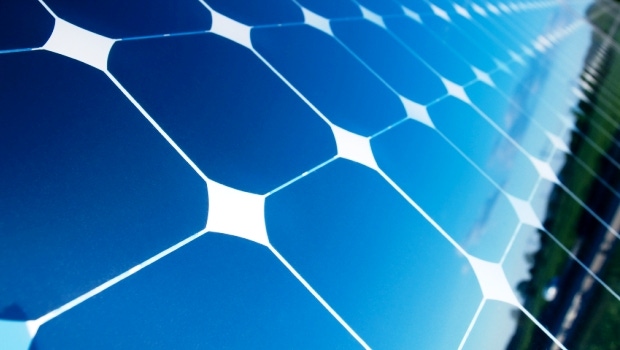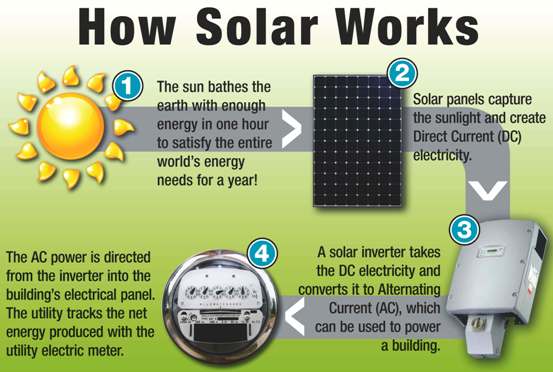In today’s world of escalating utility costs, self-storage owners are looking for ways to decrease their energy usage or pay less for the energy used. Solar energy has emerged as a very viable way to do both. Learn how this green technology works and how you can reap the benefits.
April 24, 2014

By Mark Johnson
In today’s world of escalating utility costs, self-storage owners are looking for ways to decrease their energy usage or pay less for the energy used. Solar energy has emerged as a very viable way to do both. There’s a high degree of interest in solar and, at the same time, a common lack of understanding of how it works and how to reap the benefits. This short article will provide some answers.
How Does Solar Work?
Most people are aware of what a solar panel, or module, looks like: a black or black and silver rectangle about 39 by 66 inches. These modules are grouped into what are called "strings," each consisting of eight to 12 panels. The strings are combined and terminate in an inverter. The electricity that enters the inverter as DC (direct current) power exits the inverter as AC (alternating current) power and feeds into the utility system, called the grid.
The purpose of the solar module is to turn sunlight into electricity. The function of the inverter is to convert that electricity to AC power, which is used by the grid and your storage facility. AC power is used by your lights, computer and elevators, for example.
Sunlight is converted to electricity via solar cells, small, square-shaped panel semi-conductors made from silicon and other conductive materials in thin film layers. Sunlight is composed of miniscule particles called photons. When it strikes the silicon atoms of the solar cell, the photons transfer their energy to loose electrons, releasing them from the atoms.
But freeing up electrons is only half the work of a solar cell. It then groups these electrons into an electric current. This involves the creation of an electrical imbalance within the cell, which acts a bit like a slope down which the electrons will flow. This imbalance is made possible by the internal organization of silicon.
Silicon atoms are arranged in a tightly bound structure. By squeezing small quantities of other elements into this structure, two different types of silicon are created: n-type, which has spare electrons, and p-type, which is missing electrons and has “holes” in their place.
When these materials are placed side by side inside a solar cell, the n-type’s spare electrons jump over to fill the gaps in the p-type. The n-type becomes positively charged and the p-type becomes negatively charged, creating an electric field across the cell. Because silicon is a semi-conductor, it can act like an insulator, maintaining this imbalance. As the photons dislodge the electrons off the silicon atoms, this field drives them along in an orderly manner, providing the electric current required.

Is Solar Viable For Your Facility?
There are a number of factors that play into the success of a solar installation: current electrical usage, available space for modules, shade issues, building orientation and roof structure. A professional analysis will determine the optimum system size for the best possible financial return. This financial study is driven by the amount of electricity being used as well as the specific utility-rate tariff for the facility. It is done concurrent with the site analysis, which determines if the target system is compatible with the site restraints.
Self-storage facilities are typically good candidates for solar. The economics are usually favorable, and the roof area is generally not cluttered with a lot of mechanical equipment, allowing for an efficient installation.
How Does a Solar-Panel System Reduce Expenses?
There’s a common misconception that a solar-panel system directly powers the facility where it’s installed. In the vast majority of cases, this is not true. The system typically works in conjunction with the current utility, supplementing the power used from the “grid.”
A solar-panel system reduces your utility costs through a program called net energy metering (NEM), a special billing arrangement that provides credit to customers with solar photovoltaic systems for the full retail value of the electricity their system generates. Under NEM, a meter keeps track of how much electricity is consumed by the storage facility and the amount of excess electricity sent back into the electric utility grid.
A net energy meter keeps track of all the power your solar-panel system produces. Any energy you don’t use simultaneous with production will go back into the grid through the meter. At night or on cloudy days when your system is not producing more than your building needs, you’ll consume electricity from the grid as normal. Your utility company will bill you for the "net" consumption for any given billing period and provide you with a dollar credit toward any excess during a given period. You can carry your bill credit forward up to a year.
In many cases, the type of billing for the customer is based on the time of day the electricity is used and when it’s generated through the solar-panel system. This is commonly called "time of use" (TOU). During the peak hours of the day, typically 11 a.m. to 6 p.m. in summer months, the cost per kilowatt hour is highest. Concurrently, the credit given during this peak time is the highest for solar generation. This peak period changes during the winter months, and rates and times are slightly different for each utility company.
The solar industry has made huge strides over the last 10 years, bringing this technology to the mainstream with a very reliable alternate source of energy for homes and businesses. The utilities and state agencies have worked diligently with the solar industry to create a way for the consumer to reduce electricity costs and hedge against the inevitable escalating utility rates. The self-storage industry is well-positioned to benefit from this cutting-edge technology, reducing energy expenses and feeding much-needed energy into the power grid.
Mark Johnson has been in the real estate development and construction industry for more than 30 years. He’s the director of sales and marketing for Baker Electric Solar, which he was instrumental in founding. The company is a division of Baker Electric Inc., an electric-contracting company in business in Southern California since 1938. For more information, call 877.543.8765 ; visit www.bakerelectricsolar.com.
You May Also Like





